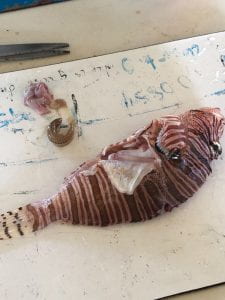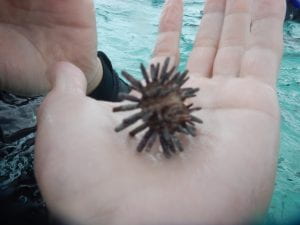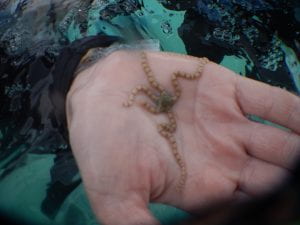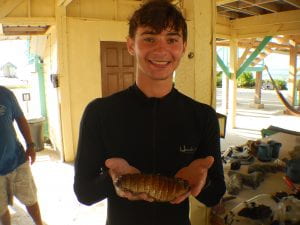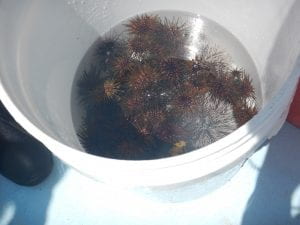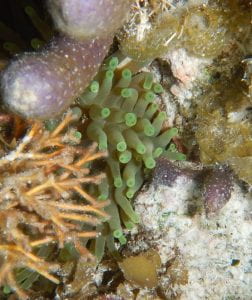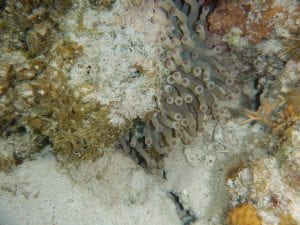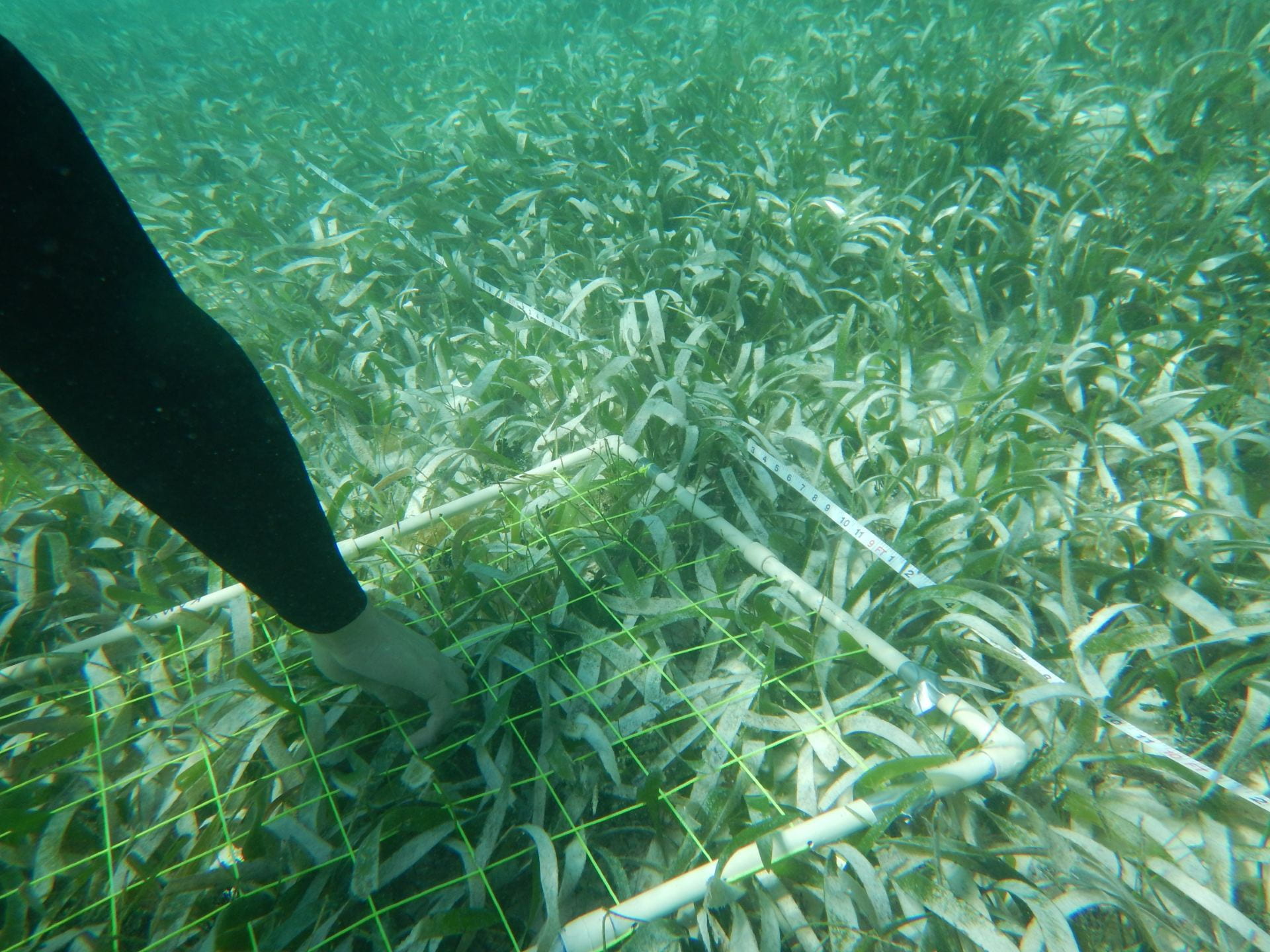This morning we met in the classroom to devise yet another method for measuring reef health. We decided on counting sea urchins, because they play a key role in eating algae. In the absence of such herbivores, algae can begin to take over coral colonies, so we decided a healthy reef would have more urchins. Again, we assessed a reef inside and a reef outside of the MPA.
We found more urchins inside the MPA during the same amount of collection time with the same amount of people (same total effort). Fishing is restricted in the MPA and carnivorous fish are often a target of commercial fishing, so the decreased presence of carnivorous fish and thus greater quantity of herbivorous fish might exist outside of the MPA. Herbivorous fish compete with urchins for food, so a larger number of herbivorous fish could decrease the number of urchins outside of the MPA. In addition, the site we studied inside the MPA had greater coral cover, which provides places for urchins to hide and could increase their numbers by improved protection from predators. We identified 5 different species of urchins.
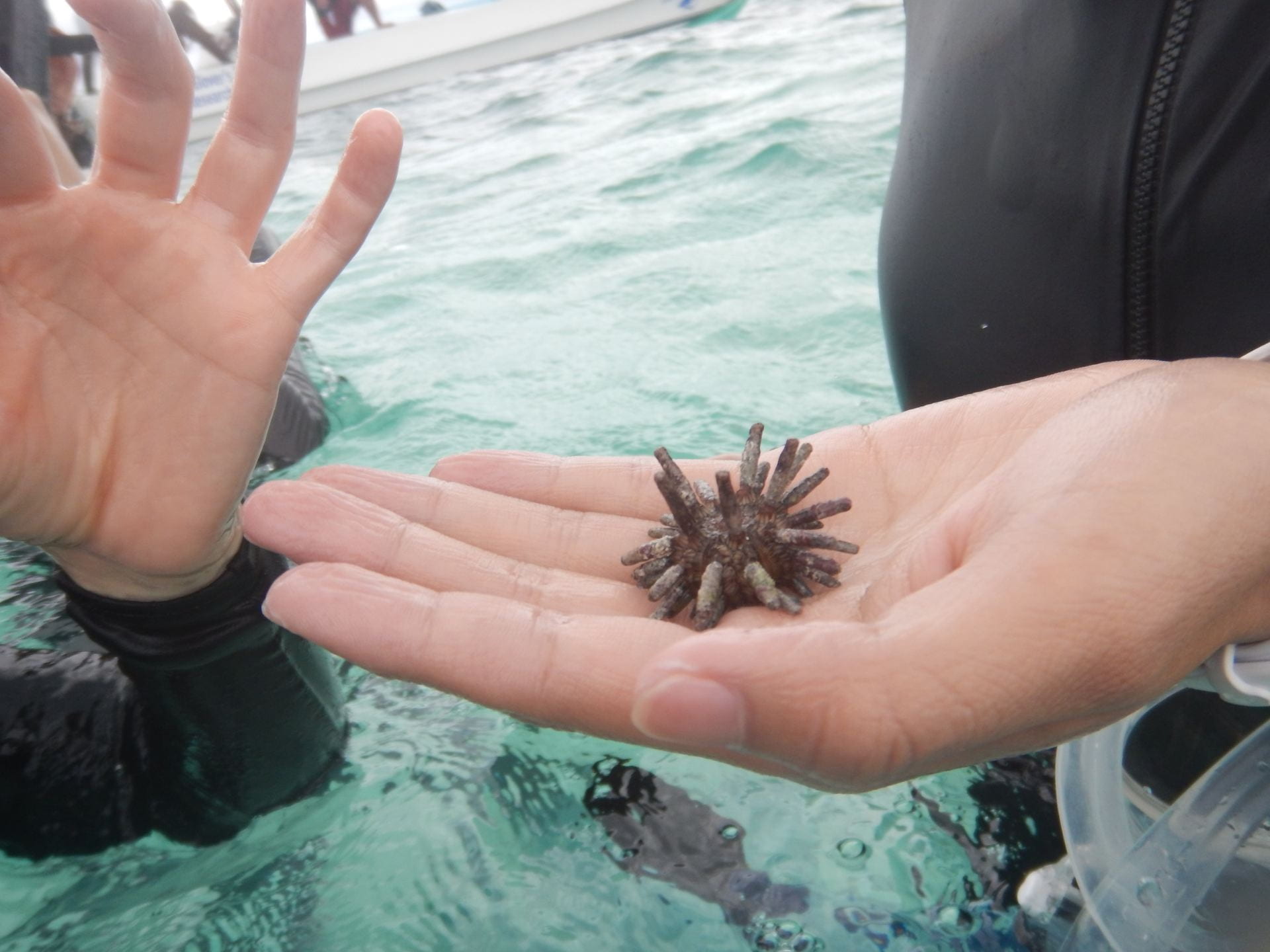
A few people are still feeling a bit seasick from the trip to the forereef, where the wave action was greater. By lunch, I was feeling a bit off as well, despite not diving down at the forereef. I surmised after it only took a few hours to recover that I had been too cold in the water while searching for sea urchins. By the end of the day I think most people felt better, but we are all exhausted. Despite that, we did lectures in the afternoon today so that after dinner we could snorkel at night.
The point of snorkeling at night is that we can see bioluminescence. Corals are interesting at night as well because they extend their polyps (many species retract them during the day). I had trouble taking acceptable photos in the dark, and I kept alternating between being right on top of my buddy (Keegan) and trying to locate him because I got too far away. He was wearing all black, and it was dark—I guess I was easier to spot at a distance with my white snorkel and mask. I ended up wishing everyone was wearing more distinctive gear, because though we were supposed to stick together with our buddies, it was hard to tell who was who. It was also hard to find the reef in the dark and we initially swam past it.
We did manage to see the coral polyps, and some large Spiny Lobsters! The rest of the experience was marred by accidentally kicking and being kicked by my fellow TFBers, and trying to stick my head up out of the water to see where everyone was. In total we didn’t see that much.





